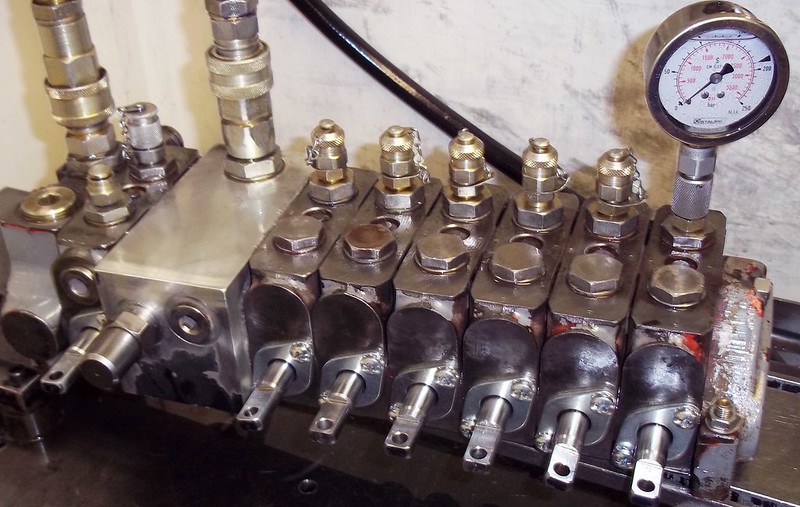Modular valves are found in almost every hydraulic system in use today. Like all hydraulic valves, they make sure the fluid inside the circuit flows the right way. Controlling the direction, rate, and strength of the flow of hydraulic fluid around the machine’s circuit is critical to preventing overloading, under-pressured lines and lifts, and fluid retention. Modular valves help prevent these issues, along with limiting damaging backflow and reducing the risk of O-ring seal breakage.
While capable of doing everything a precisely-tooled individual valve does to one-way fluid flow these parts also have a couple of additional, highly useful features attached.
What Makes A Modular Valve ‘Modular’?
A modular valve is a valve that has been mounted onto a set-sized base plate and safely enclosed, creating a ‘modular’ block. Plastic box panelling protects the valve housed inside from particulate ingress and wear-and-tear.
While fixed valves traditionally plumbed into hydraulic fluid lines as an in-line component, modular valves have dedicated inputs and outputs at fixed points that attach easily to O-rings.
With fixed mountings, same-size modular housing can be swapped over quickly and safely to reconfigure, test, and repair the hydraulic circuit. Replaceability saves time, fuss, and money – faulty modular units can often be replaced the same day.
Modular hydraulic valves also chain together to form what’s known as a manifold block. Manifold control blocks use an array of modular valves to sequentially alter the flow rate and volume of hydraulic fluid, allowing greater flexibility in hydraulic designs. Manifolding modular valves eliminates the need for excessive connecting piping – a key source of hydraulic failure.
What Can Modular Valves Do?
Modular valves divide into four main categories:
1) Pressure Control
Pressure-regulating modular valves are the most common type of modular valve. These analogue units limit the PSI within a set area of the machine reducing the in-flow of fluid per second. They’re used to stop pressure overloading pipes and cylinders during actuating movements, spikes and peaks of motion, and unexpected surges. Some valves include adjustable screws to configure the valve to different levels of fluid resistance.
2) Flow Control
Similar to pressure regulators, the flow control valve allows safe omnidirectional hydraulic motor use – great for returning fluid to the reservoir. The valve limits flow to the best-powered direction of travel while blocking backflow (up to a critical PSI).
3) Pressure Checkers
Modular pressure valves will automatically open if a rate of flow or set PSI is met. They’re often used to create safe release channels, ‘airlocks’, and pressure limiting loops to prevent overpowering and over-pressurisation.
4) Reversible Shuttle
Shuttle valves include digital, electronic control mechanisms that allow them to integrate (up to) all three features into the system on command. Industrial systems use them for fast reconfiguration (hence ‘shuttle’).
Hydraulic Components From Hydrastar
At Hydrastar, we stock a variety of modular valves – alongside thousands of other components for hydraulic and pneumatic power systems. Call, email, or visit our online store today to place an order, or request help sourcing the parts you need. We also offer a bespoke design service for a range of fluid power applications.
Image source: Flickr



